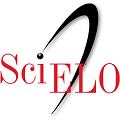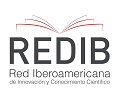Isolation of Salmonella spp. from hen eggs in Casilda city, Santa Fe, Argentina
DOI:
https://doi.org/10.14409/favecv.v18i1.8277Keywords:
eggs, salmonellosis, ArgentinaAbstract
In order to determine the presence of Salmonella spp. in eggs from Casilda city, Santa Fe, Argentina, a total of 125 eggs were collected from different stores and yolks and egg shells were sampled. Both samples were seeded in tetrathionate broth with the addition of iodine and brilliant green solution and incubated at 43 ° C for 24 hours. An aliquot of the surface was taken from each medium seeded and seeded on Xylose-Lysine-Deoxycholate agar, being incubated for 24-48 hours at 37 ° C. The developed colonies were identified using biochemical tests and those identified as Salmonella spp. they were serotyped. Three strains of Salmonella spp. were isolated: Salmonella ser. Tiphymurium and Salmonella ser. Anatum from samples of yolk and Salmonella ser. Anatum from the egg shell of a third egg. The isolation of Salmonella spp. in eggs for human consumption reinforces the need to take biosecurity measures to reduce the incidence of this bacterium in the farms.
References
Bridson EY. 2006. The Oxoid Manual. 9th Edition. Basingstoke (Inglaterra), Oxoid Limited. Disponible en: https://vdocuments.site/oxoid-manual-9th-edition.html.
Bueno DJ, Soria MC, Soria MA, Procura F, Rodriguez FI, Godano EI. 2017. Egg Production Systems and Salmonella in South America. En: Producing Safe Eggs. Microbial Ecology of Salmonella. Elsevier B.V. Chapter 6: 87-110.
Caffer MI, Terragno R. 2001. Manual de procedimientos para la caracterización de Salmonella. Instituto Nacional de Enfermedades Infecciosas - Ministerio de Salud, Buenos Aires. 37pp.
De Franceschi M, Viora S, Anselmo R, Barrios H. 1998. Salmonella enteritidis en huevos frescos. Rev. Med. Vet. (Buenos Aires) 79: 5-7.
EFSA. 2011. Scientific Report of EFSA and ECDC. The European Union Summary Report on Trends and Sources of Zoonoses, Zoonotic Agents and Food-borne Outbreaks in 2009. EFSA Journal 9: 2090
Eng SK, Pusparajah P, Ab Mutalib NS, Ser HL, Chan KG, Lee LH. 2015. Salmonella: A review on pathogenesis, epidemiology and antibiotic resistance. Front. Life Sci. 8: 284-293.
Krause G, Terzagian R, Hammond R. 2001. Outbreak of Salmonella serotype anatum infection associated with unpasteurized orange juice. South Med. J. 94: 1168-1172.
Leyva Castillo V, Valdés Amey E, Cisneros Despaigne E, Pérez Rodríguez O. 1996. Determinación de Salmonella y enterobacterias totales en huevos frescos de gallina. Rev. Cubana Aliment. Nutr. 10: 83-86.
Mancera Martínez A, Vázquez Navarrete J, Ontiveros Corpus ML, Duran Valencia S, Lopez Huidobro D, Tenorio Gutiérrez V. 2005. Identificación de Salmonella Enteritidis en huevo para consumo en la ciudad de México. Tec. Pecu. Mex. 43: 229-237.
Noseda RP, Bigalli MC, Andrich MG, Cordeviola JM. Bardón JC, Martínez AH, Combessies GM. 2002. Aislamiento de Salmonella en muestras clínicas humanas, animales y alimentos, durante 1988-2001. Vet. Arg. 19: 752-59.
Downloads
Published
How to Cite
Issue
Section
License
FAVE Sección Ciencias Veterinarias ratifies the open access model, in which contents (in full) are available free to anyone in the internet. The costs of production and publication are not transfered to the authors. This policy intends to break social and economical barriers that generate inequities in the access to information, and for the publication of research results.
All articles can be accessed at http://bibliotecavirtual.unl.edu.ar/publicaciones/index.php/FAVEveterinaria/issue/current/, under license Creative CommonsAtribución-NoComercial-Compartir Igual 4.0 Internacional.










